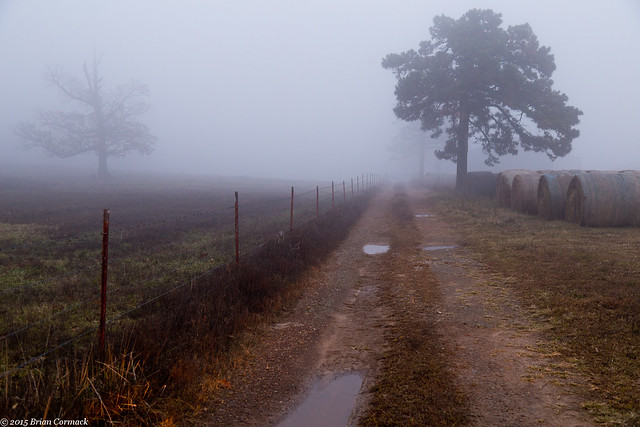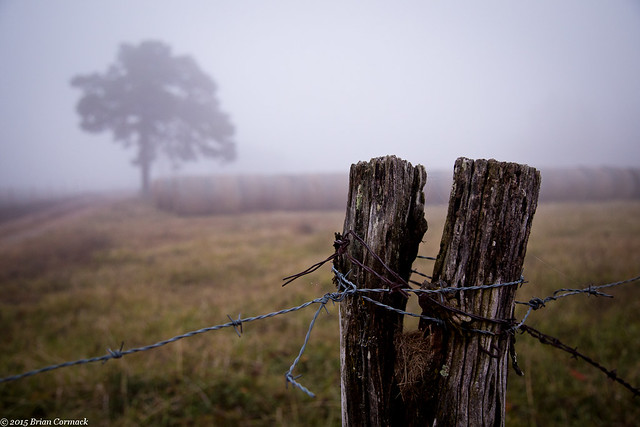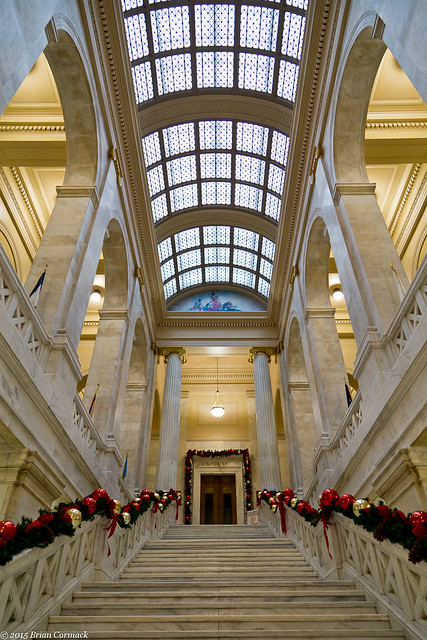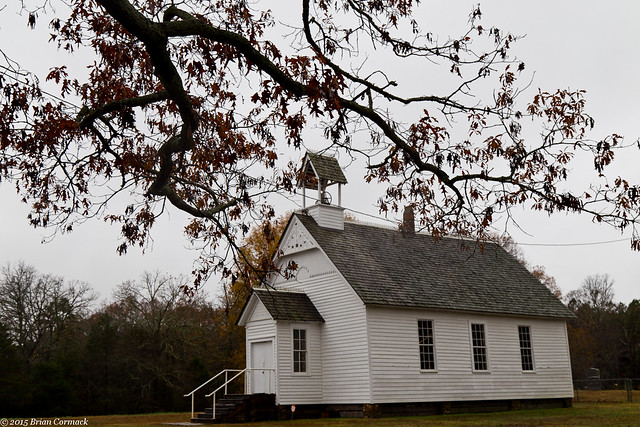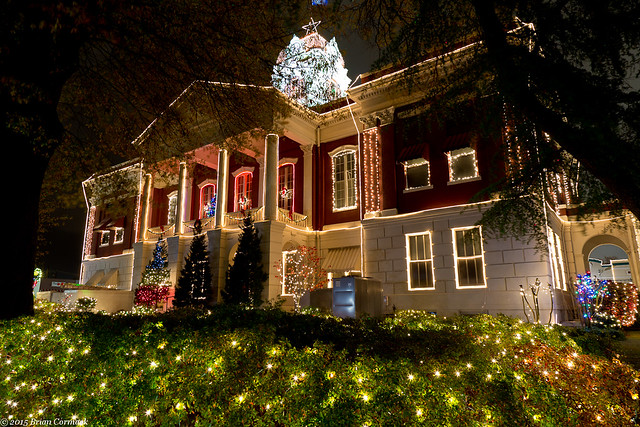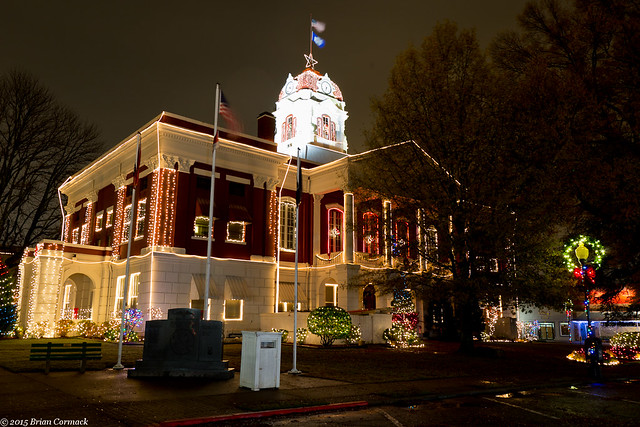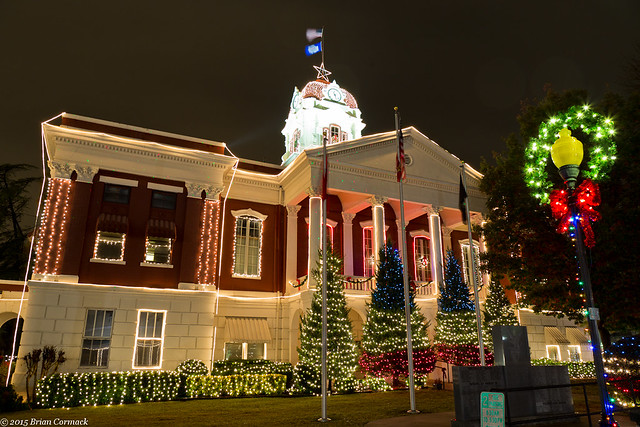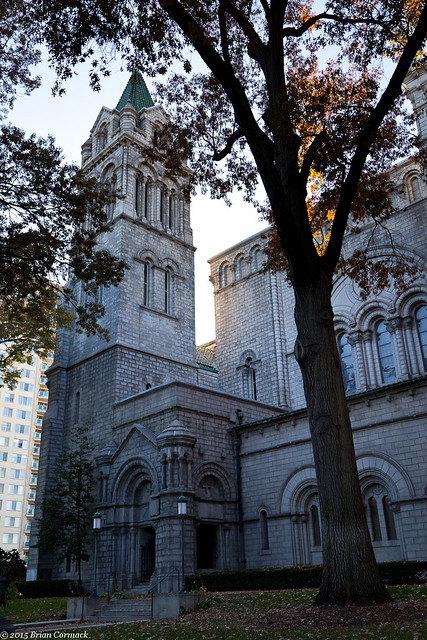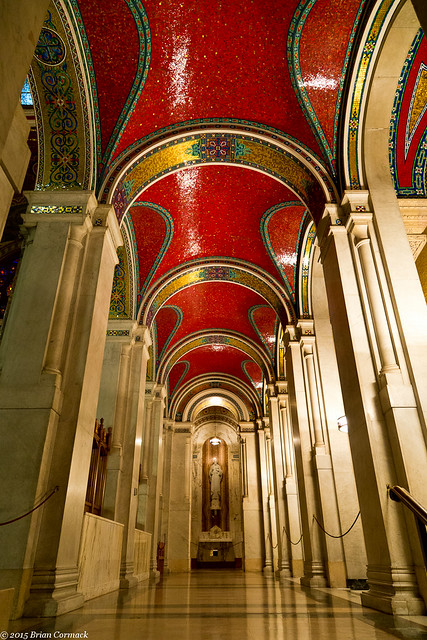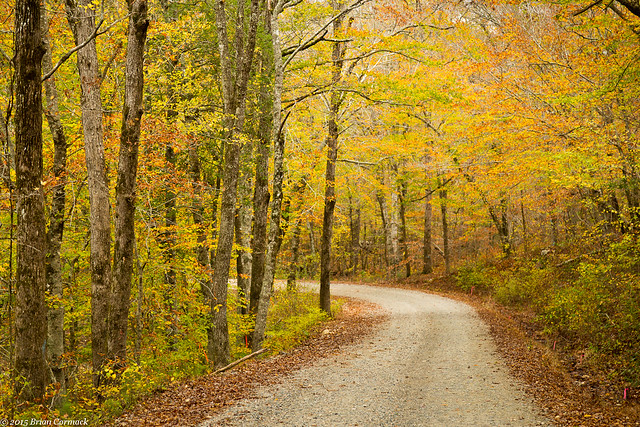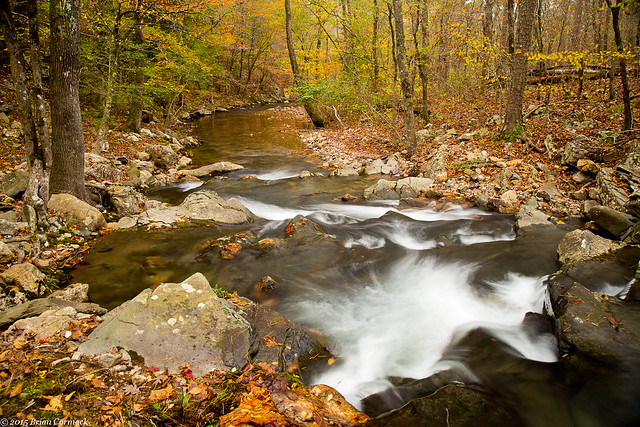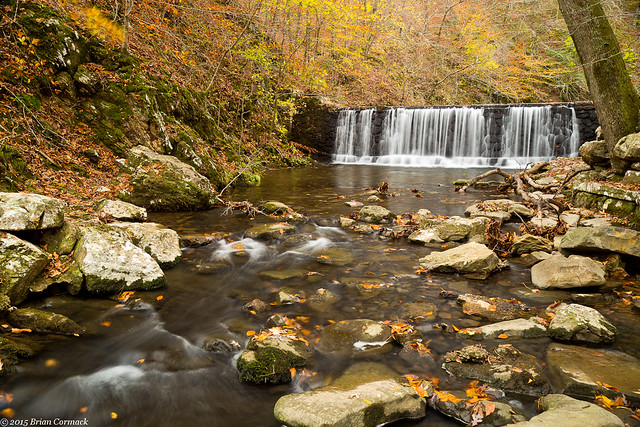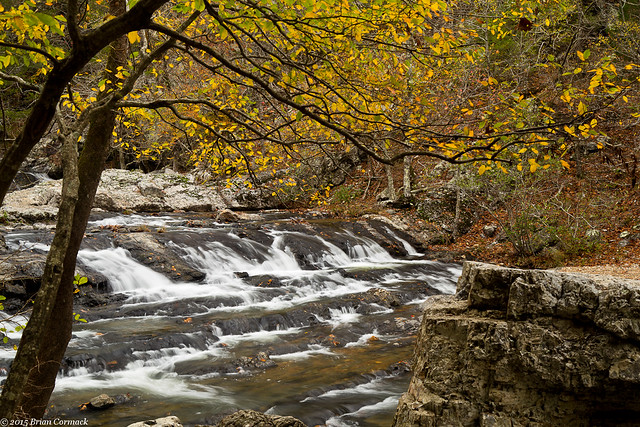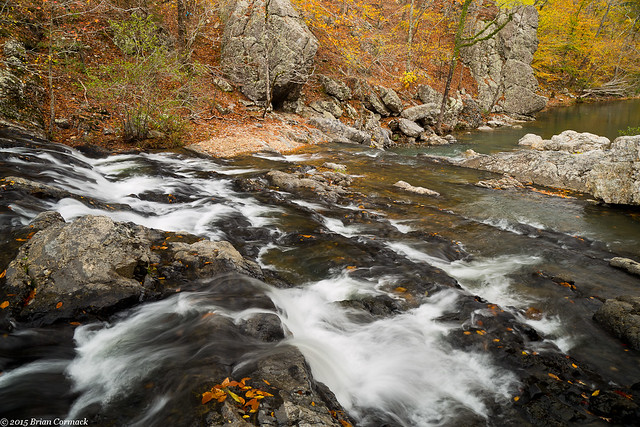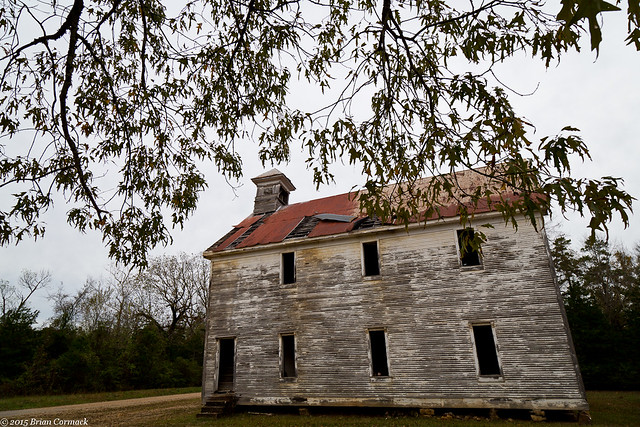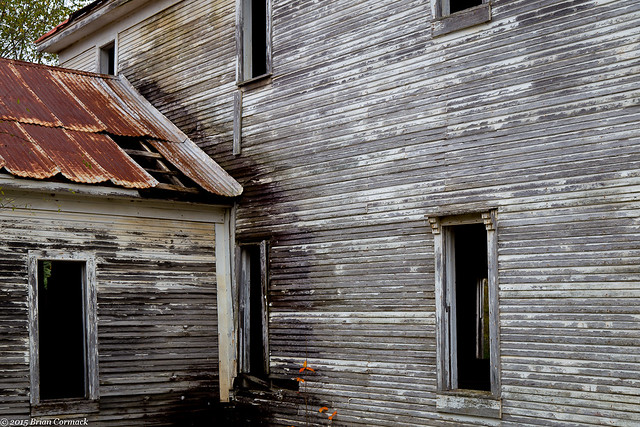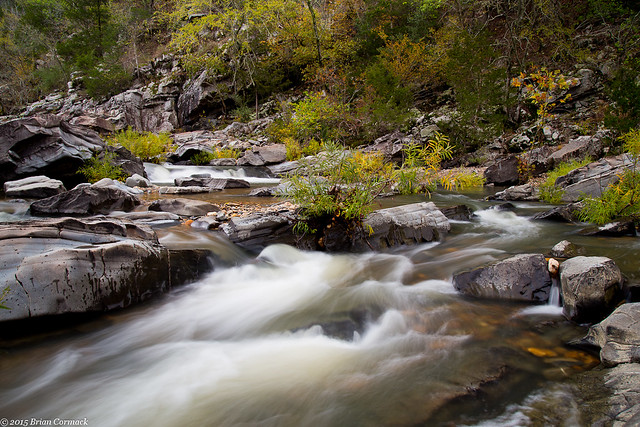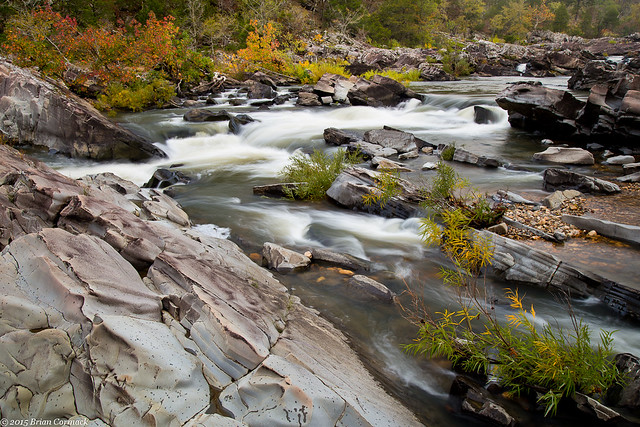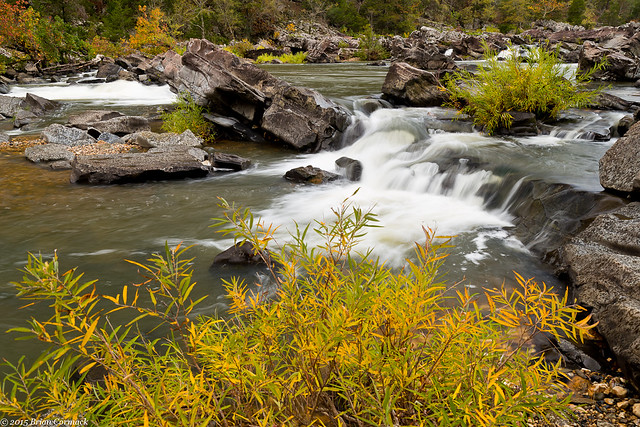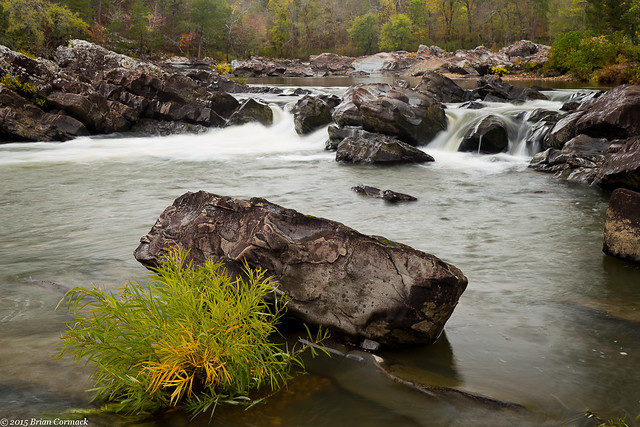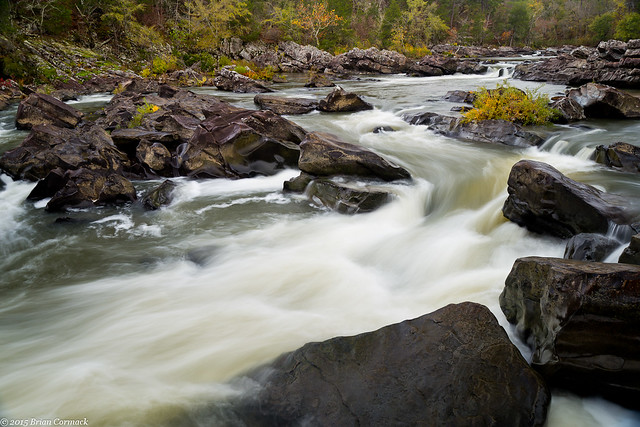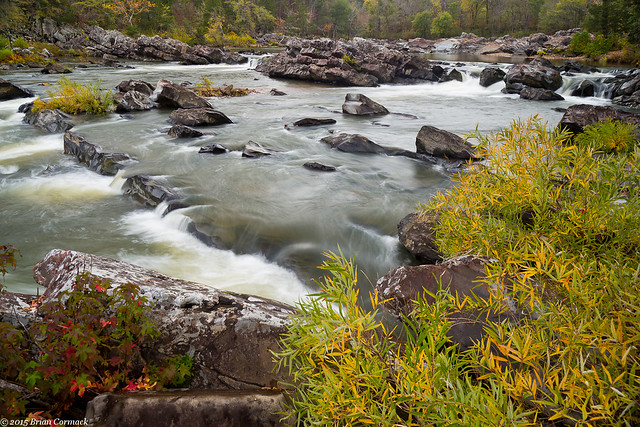The weekend after we returned from our trip to Arizona, I headed up into the Ozarks to try to catch some pictures of this year's fall colors. The drought we had this summer seems to have zapped a lot of the color (the oaks mostly just turned brown), but you could still find places with great fall colors in the Ozarks and Ouachitas.
I left early in the morning, and encountered some thick fog as I got higher into the Ozarks.

The fog was really thick, and luckily there wasn't much traffic out that morning. I did find a safe place to pull over to get this shot of an old abandoned home that was nearly shrouded in fog.
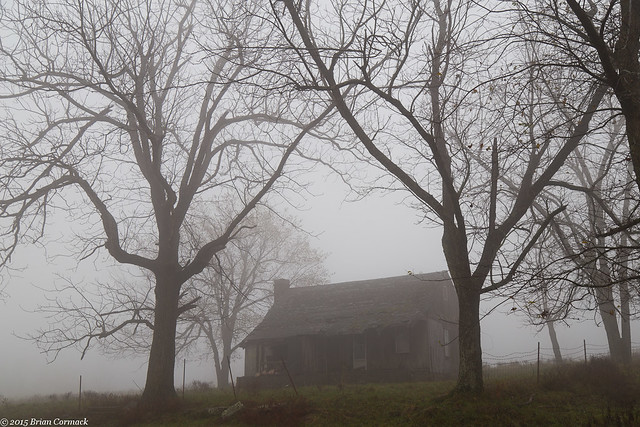
I drove out of the fog when I descended into Boxley Valley, along the Buffalo National River. This is one of the most scenic places in the state, and I was interested in seeing it with some fall color. The first stop was the parking lot at Lost Valley, where I was to meet up with my Aunt (another photographer, who was driving down from Berryville). I walked around the Lost Valley area for a few minutes, stopping at a few places. This old building was apparently an old school, but I couldn't find any info on how old it is.
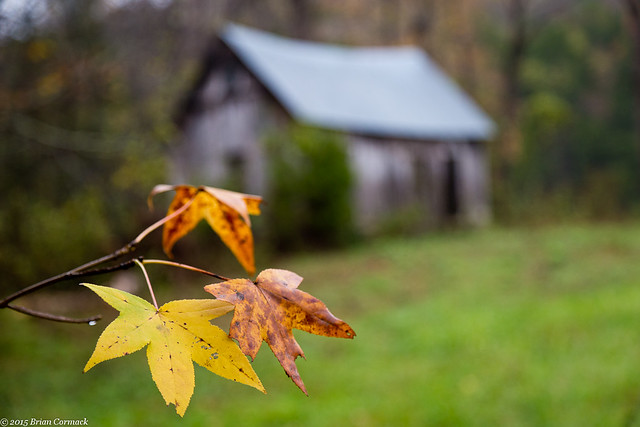
After we met up with each other, we stopped at a few more places near Lost Valley. This is along the creek-bed for Clark Creek, which flows out of Lost Valley. It was completely dry, which wasn't surprising since the creek usually runs underground through here (unless there has been a lot of recent rain, which we hadn't had in awhile). Instead of water, the creek was filled with thousands of fallen leaves.

And we went by a few other places that had some great displays of fall color. It's a shame the trees are only this colorful a few weeks out of the year.
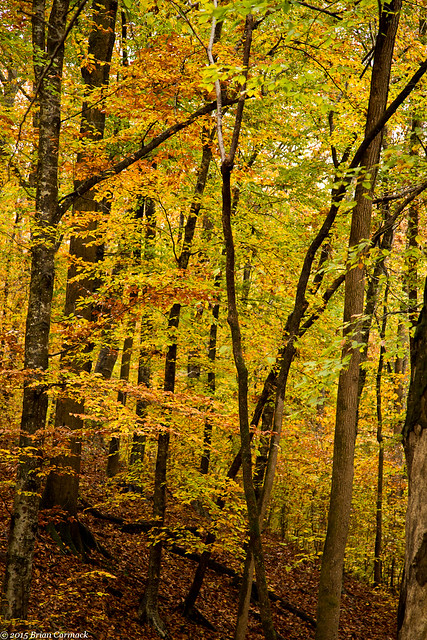
Our next stop was the old Boxley Mill. The first mill in Boxley Valley was built in 1840, near a small spring. The mill was even the location of a minor Civil War skirmish (called the "Battle of Whiteley's Mill"). After the war, the original mill was replaced with the current mill in 1870.
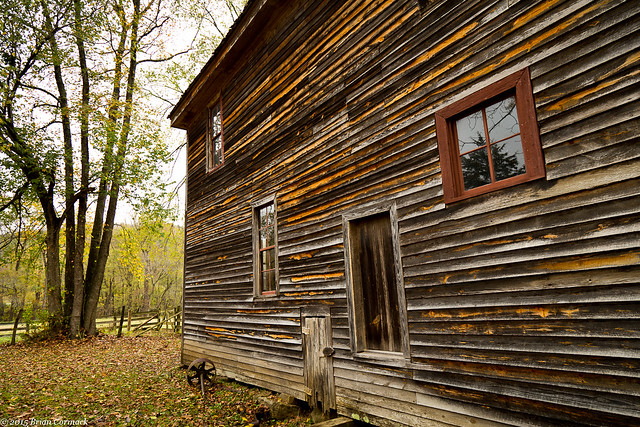
The mill continued to operate until the 1960s, until it finally closed.
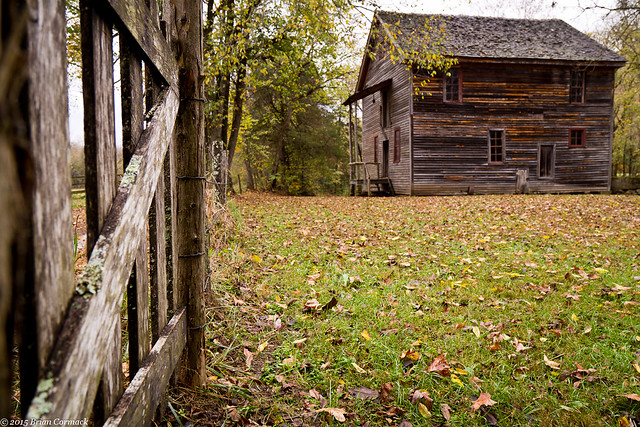
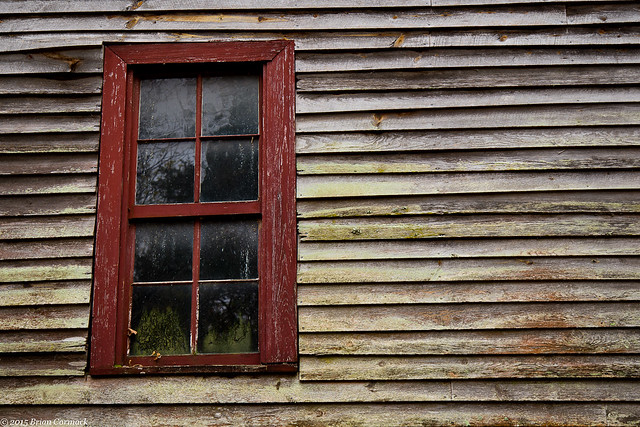
All of the original mill equipment is still inside the old building. It actually looks fairly close to what it must have looked like back in the olden days (besides the interpretive signs installed by the Park Service). The Park Service actually opens the mill up every once in awhile, including the day that we visited. This is the view looking out through one of the old windows.
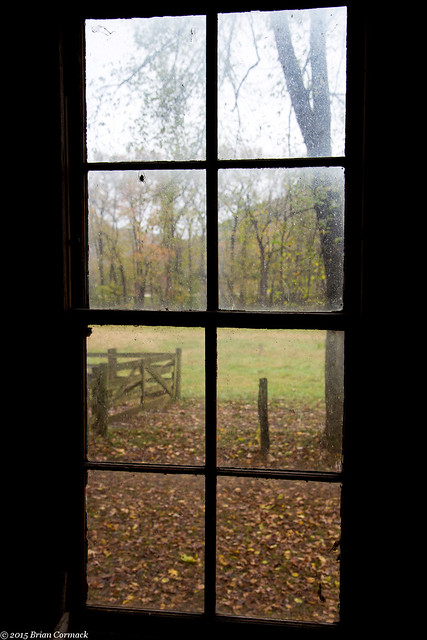
Nearby is this old springhouse, which is right by the road but is well hidden by trees and vegetation.
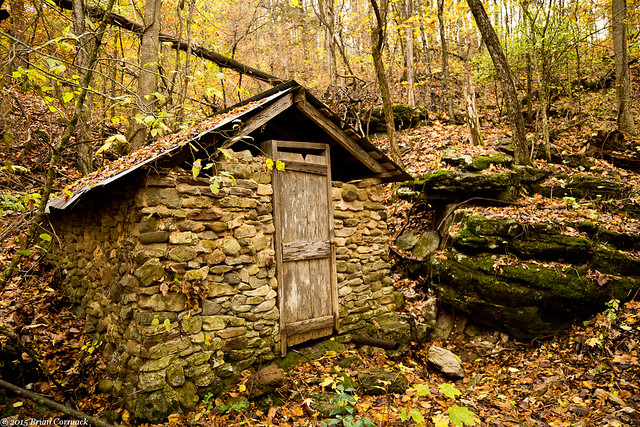
We then drove by the huge crowd of people parked along the side of the road trying to see Boxley Valley's resident elk population. Elk were native to the Buffalo River area, but all of the elk were hunted and disappeared in the 1800s. But several elk were reintroduced, and have since flourished in Boxley Valley. Now they are one of the most popular attractions here, with people lined up along the road to view the elk. We stopped to take a look, joining a few other photographers with zoom lenses that probably cost more than my car.
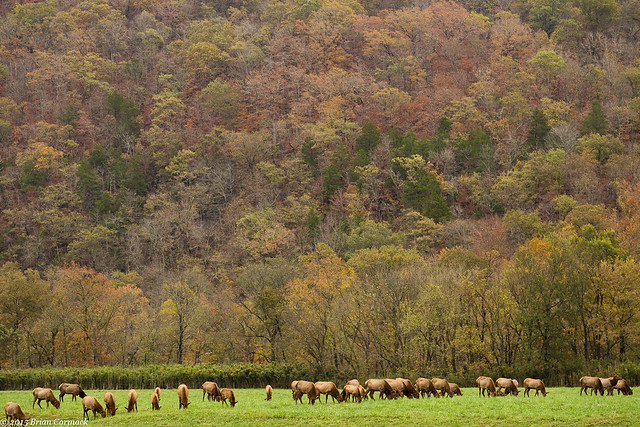
After that we drove out of Boxley Valley and visited the Steel Creek access along the Buffalo River. This is another one of the most scenic places in the state, where the Buffalo travels under some tall bluffs. This is the view of Steel Creek, near its confluence with the Buffalo River.
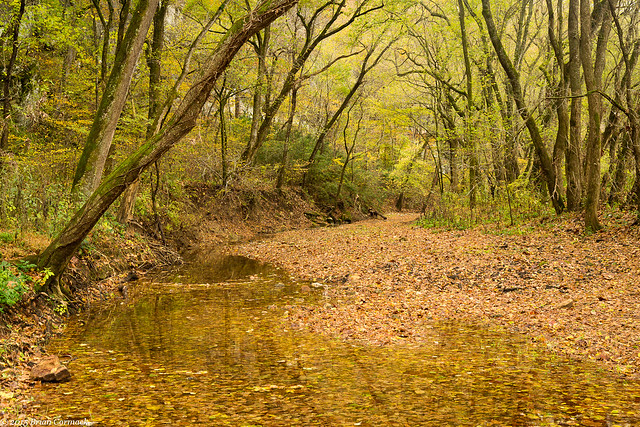
We then headed over to the campground, and then hiked along the edge of the river. It's a beautiful spot, where the river curves around Roark Bluff, which towers 200 feet above the river.
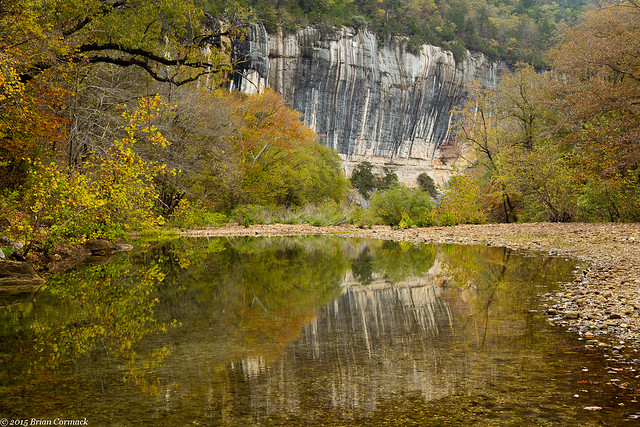
From there we headed over to Jasper, and had a late lunch at the Ozark Cafe. After that it was time to head home, so I started the drive south towards Little Rock. Along the way, I drove into another band of thick fog. And again, I found a good place to pull over and tried to take a few pictures. It was getting dark, but I got a few pictures of a field that was enveloped by fog before I hit the freeway and made it back home.
